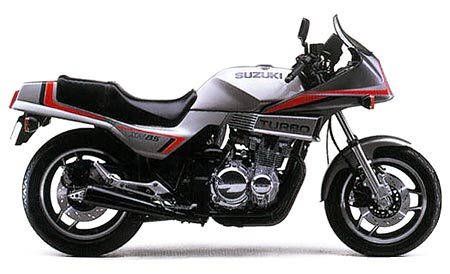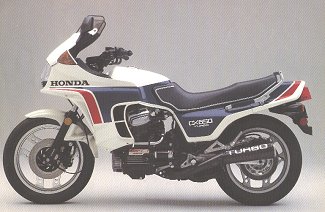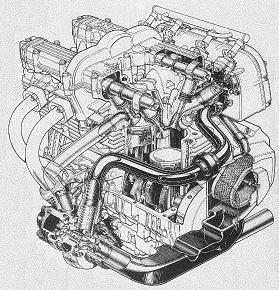The CBR250Ri Turbo
Whirly Things on Bikes
Home
CBR
1
2
3
4

Turbo bikes had their heyday (which was very brief and not very hey) in the early 1980s. Each of the Japanese “Big Four” manufacturers had a go at building a turbo bike, but their hearts really weren’t in it. The bikes were heavy, expensive, not particularly powerful and suffered from excessive turbo lag. As a result, they sold poorly, and the Big Four happily declared that motorcyclists the world over hated turbos and went back to building porky 1100s with relief.
If you’re really cynical (like us) and you squint just right, the whole sordid episode looked remarkably like it was staged to prove a point. “Look” the Big Four have protested for the last 20-odd years “We built turbo bikes and they were crap. Turbo bikes don’t work and they don’t sell”. Sorry guys, but that’s not a logical argument. Yes, you built turbo bikes. Yes, they were crap. That only means you built ‘em badly, not that turbo bikes are automatically lemons.

In the world of four wheels… hey, pay attention! You there! Wake up! Yes, we know cars are boring, but we’re trying to make a point. In the world of four wheels, turbos have become common, popular, reliable and easy to hot up. Turbocharged cars feature modern technology throughout; large intercoolers to get much higher boost levels (and therefore performance) and sequential fuel injection to get the mixture exactly right through the whole rev range. They’re hugely popular, and rightly so. A modern turbocharged 2.5 litre engine is smaller, lighter and much more powerful than a naturally aspirated boat anchor with more than twice the displacement. What are the most important things in motorcycle performance? Size, weight and power. Less, less, and more, respectively. Turbos fit the bill perfectly.
The key to the whole equation is a modern sequential electronic fuel injection system, almost infinitely adjustable and hooked up to an array of sensors. Fuel and air are supplied to the motor in precisely the right amount and at precisely the right time, so the engine runs perfectly under any conditions. In comparison, the old non-sequential or mechanically timed fuel injection systems are a best-guess kind of scenario, and carbies are, quite frankly, a liability. It is possible to get reasonable results from carbies, but it requires an awful lot of experimentation with needles, jets and settings. Fuel injection is much quicker and easier to adjust, and injectors deliver a finer spray (and hence better fuel atomisation) than any carburettor.
What does all this mean to Team Feral? Simple: once you've got a fuel injection system on your CBR250, you can bolt on a turbo, adjust the mapping, and make the little screamer go like hot weasel shit off a greased shovel. Whooosh!
